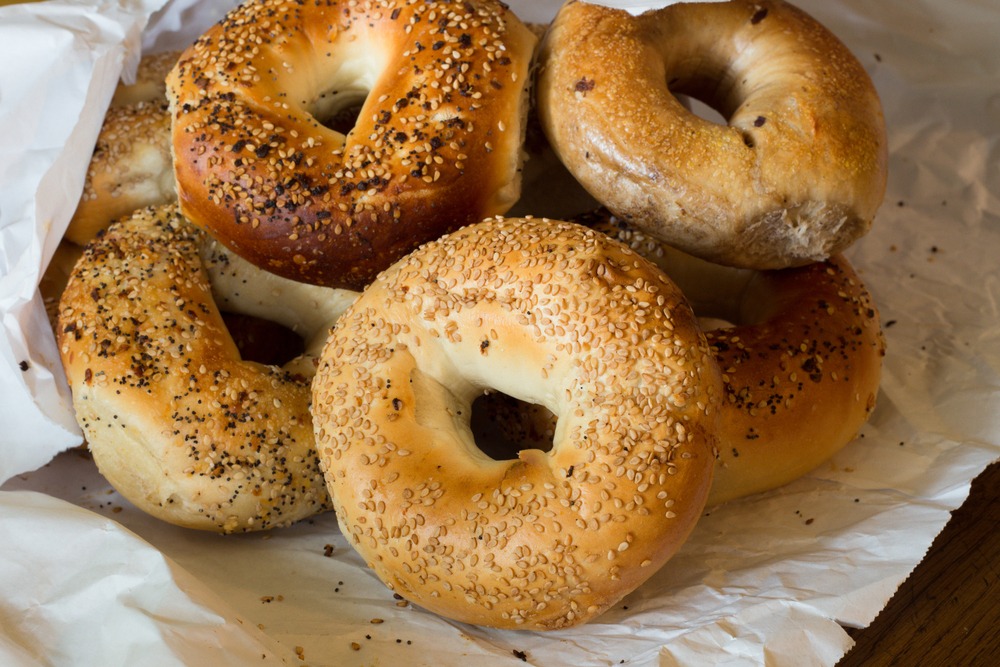Taper week—the week before an important competition when you reduce training load—requires a different type of discipline than normal, high-volume training weeks. Many elite athletes are used to emptying their tanks and gritting through the pain, so it can feel foreign to rest, restore, and reload. Below are some nutrition tips for a successful taper week that leaves you feeling healthy and prepared for competition.
1. Carb Load the Right Way
Pre-event pasta dinners have been around for longer than many elite athletes have been competing, but does carb loading really live up to the hype? Experts say yes, particularly in the 36 to 48 hours leading up to competition (Burke, 2007). Carb loading can extend the amount of time athletes are able to exert before experiencing fatigue. Currently, the experts recommend athletes consume 10-12 grams per kilogram of body weight per day during the two days leading up to an endurance event (Burke, 2007).
 For a 150-pound person, this would equate to 680-815 grams of carbohydrates per day. When it comes to the type of exercise, experts typically recommend 5-7 grams per kilogram of carbohydrate per day for general training, and 7-10 grams per kilogram per day for endurance training.
For a 150-pound person, this would equate to 680-815 grams of carbohydrates per day. When it comes to the type of exercise, experts typically recommend 5-7 grams per kilogram of carbohydrate per day for general training, and 7-10 grams per kilogram per day for endurance training.
It may be tough to hit this high threshold without making an intentional effort, so it can be helpful to find high carbohydrate foods to add to meals and snacks in the days leading up to a competition, such as bagels, white pasta, white bread, low-fiber cereal, and low-fiber fruits like bananas, grapes, and melon. Carb loading can also make some athletes feel uncomfortably full, so remember that it’s fine to maintain normal carbohydrate intake for most of taper week and just increase intake in the two days prior to competition.
2. Reduce Your Fiber Intake
Registered dietitians often recommend high fiber diets because of the profoundly positive impact on the gut microbiome, regulating blood glucose levels, reducing cholesterol, and regulating blood pressure (Anderson et al., 2009). Typically, people should be shooting for a minimum of 14 grams of fiber for every 1,000 calories eaten in a day. High fiber foods include beans, cruciferous vegetables, whole grains (e.g., quinoa, farro, brown rice, and whole grain pasta), berries, oatmeal, and seeds.
However, in the 3-5 days leading up to a competition, we want to reduce fiber intake for several reasons. First, high fiber foods can cause gastrointestinal distress during bouts of high intensity exercise. This means that in the 3-5 days before a competition, athletes may want to shift their focus to lower fiber carbohydrates, such as white pasta, white rice, white or sourdough bread, and refined carbohydrates. These will be more easily digested and reduce the risk of event-day GI complaints, such as bloating, gas, and diarrhea. Furthermore, it will be easier to eat a larger volume of carbohydrates when choosing lower fiber foods. Fiber makes us feel full faster, which makes it difficult to eat the large amounts needed to hit the high carbohydrate threshold mentioned above.
3. Don’t Restrict Your Eating, and Keep Protein Up
When athletes reduce their training load during taper week, it can be tempting to concurrently restrict eating to match reduced exercise. But intense training causes accumulated muscle damage and fatigue, so it is crucial to supply your body with the nutrients needed to repair and recover during taper week. Restrictive eating will cause the body to prioritize essential functions at the expense of processes such as muscle repair and recovery.
On top of consuming plenty of low fiber carbohydrates, athletes will want to ensure they are meeting their protein needs, which range from 1.6-2.2 grams per kilogram per day (Phillips et al., 2020). In the days before your carbohydrate loading period, shoot for 5-7 grams per kilogram of bodyweight of carbohydrates—a slight decrease from higher volume weeks, but still enough to meet your body’s needs.
References
Anderson, J. W., Baird, P., Davis, R. H., Ferreri, S., Knudtson, M., Koraym, A., Waters, V., & Williams, C. L. (2009). Health benefits of dietary fiber. Nutrition Reviews, 67(4), 188–205. https://doi.org/10.1111/j.1753-4887.2009.00189.x
Burke, L. M. (2007). Nutrition strategies for the marathon: Fuel for training and racing. Sports Medicine (Auckland, N.Z.), 37(4–5), 344–347. https://doi.org/10.2165/00007256-200737040-00018
Phillips, S. M., Paddon-Jones, D., & Layman, D. K. (2020). Optimizing Adult Protein Intake During Catabolic Health Conditions. Advances in Nutrition, 11(4), S1058–S1069. https://doi.org/10.1093/advances/nmaa047
Read more Spirit of Sport blog posts



